On December 13, 2021, an anomalous trial for the United Kingdom but also for all of contemporary Western Europe kicked off in Bristol’s Crown Court: four people were tried as they were accused of knocking down and damaging “without legal justification” a publicly owned statue. The statue is that of Edward Colston, and the event took place, you may recall, in theharbourside (the harbor) of Bristol on June 7, 2020. Images of the actions of the crowd jubilantly knocking down, vandalizing, and then throwing into the river the statue of the slave trader and benefactor (remembered, however, by the effigy only in its second guise) had gone around the world, sparking uproar, condemnation, and fear. Fear in good part related to the fear that the U.S. debate over statues (which have much more explicit political use there than in Europe) was about to spill over into the Old World with screaming mobs that would tear down any statue representing men who had been guilty of crimes.
This was not the case: at the time of writing, the statue of Edward Colston was the only statue taken down by mobs in Western Europe between 2020 and 2021, and, in fact, even in previous decades. A unique event, due to unique conditions (even in the rest of the UK the figure of Colston was well known), related to the history and fabric of the city, and which now with the trial of the already renamed “Colston 4” will see the conclusion of the judicial part. All other parts of this story, however, are just beginning. A city finds itself (guiltily late, but with considerable effort) dealing with the tangible and intangible legacy of slavery and of a man whose wealth partly, directly and indirectly, forged it. Indeed, Edward Colston (1636 - 1721) amassed a fortune through his trade with the New World, which included the slave trade (he became “deputy governor” of the Royal African Company, the equivalent of today’s chief executive, in 1689), and this fortune was poured into the United Kingdom and in particular on the city of Bristol, where he built schools and hospitals for certain sections of the population and, thanks largely to the fact that the merchants’ society he presided over (the Society of Merchants Venturers) continued to be prosperous and powerful in the city in the centuries to follow, even after the abolition of slavery, he gained the benefit of being remembered as a philanthropist. Today, Bristol is facing a unique challenge in Europe: dealing with the consequences of having a statue taken down in the public square. How is he doing it?
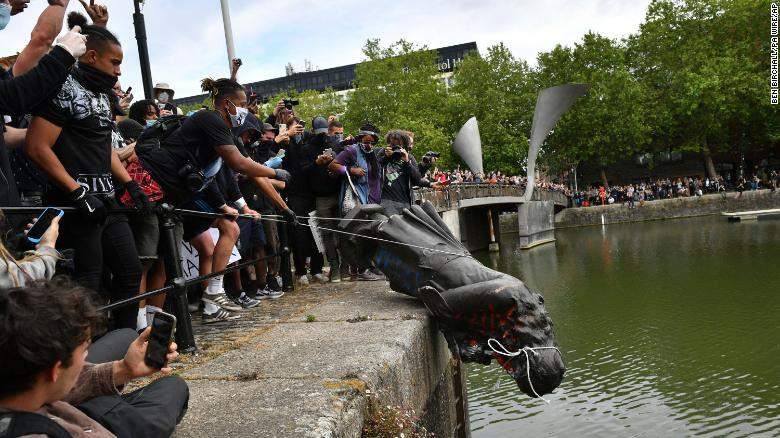
This problematic legacy had been debated in the city for a few decades, and petitions followed, but leading to a series of deadlocks, symbolized by the statue that continued to loom over the main square. On June 9, 2020, contextualizing the incident on Jacobin Italy, I explained that Edward Colston in Bristol"is everywhere: pubs, public buildings, schools, streets, and even the tallest building in the entire city, built in 1973, bear his name." A situation derived mainly from the actions of the Society of Merchants Venturers, which made Colston its champion in the late 19th century, funding the Harbourside statue (“the city of Bristol to its wisest and most virtuous son,” the epigraph read) and obtaining the dedication of several streets and roads to the “philanthropist.” dedications later replicated uncritically in new buildings constructed during the 20th century. It was a truly invasive to the point of being oppressive presence (fun fact, one of the four accused of the abatement lived on Colston Road, one of the three streets dedicated to the merchant), with some 20 streets, pubs, theaters, buildings, and schools dedicated. The 30-year debate created around his figure and legacy had led to a huge nothingness: only in 2018, when Colston Hall, the public concert hall, had finally decided to change its name, was there a protest by users who threatened to boycott the theater, blocking the process.
In retrospect, it almost seemed as if everyone--institutions, stakeholders, entrepreneurs--was waiting for the statue to fall to awaken from their torpor. In the very first days following the fall, the main buildings (Colston Hall and Colston Tower) announced a change of naming, literally removing the words “Colston” in anticipation of the new name, which is now Bristol Beacon and Beacon Tower, respectively. So did the private schools of the Society of Merchant Venturers. The city council created a commission ("We Are Bristol History") tasked with addressing the city’s slavery past. The University was announcing new courses. Today, of the dozens of dedications in Colston that existed until the summer of 2020, few remain, and all are being revised: in many cases, it is proposed to use the name that was in use before the 19th century. A complete list of dedications changed or under discussion here. Needless to add, the revision of all these dedications is leading, more or less consciously, to debate and learn about the history of those places and spaces.
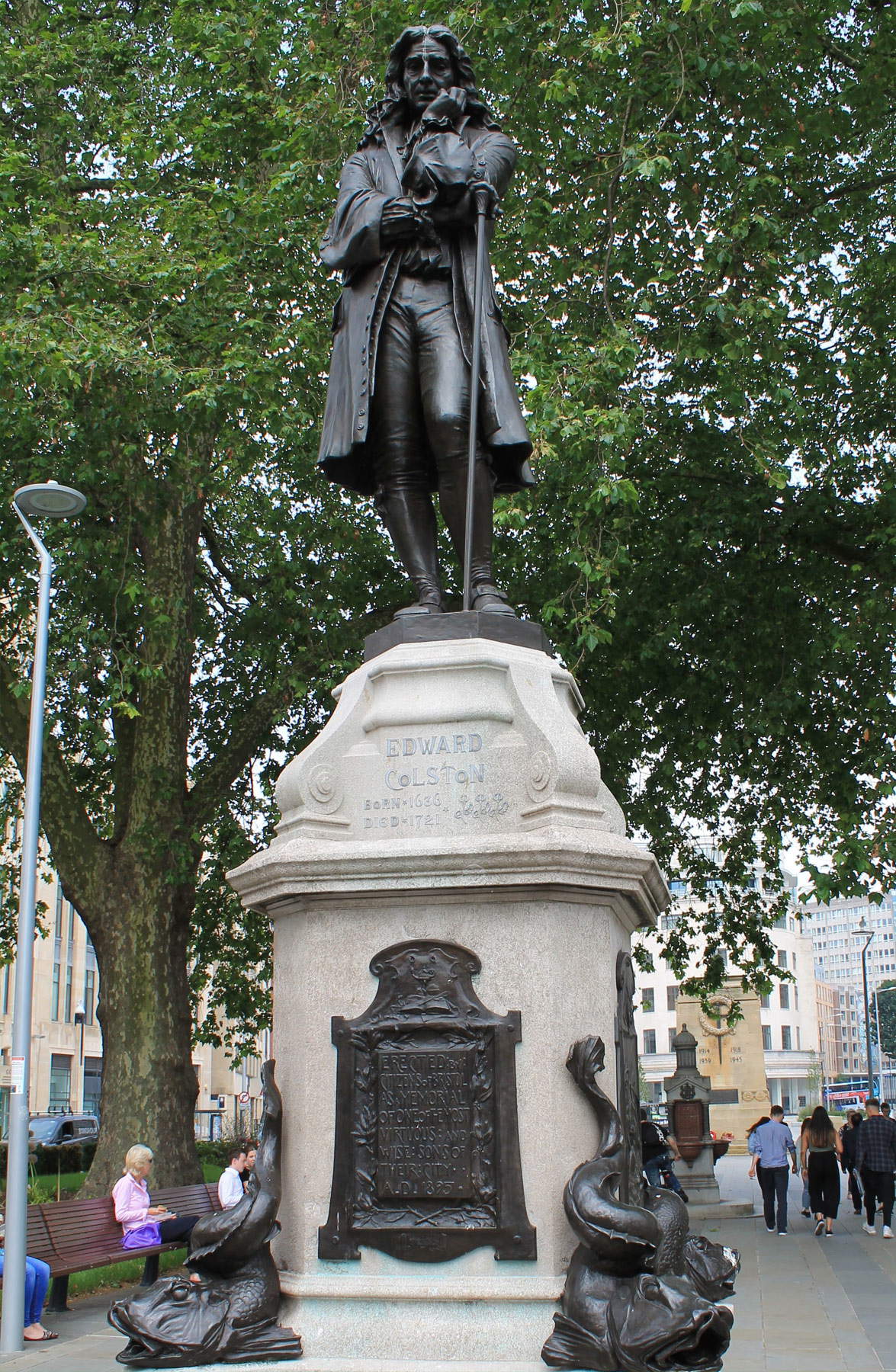
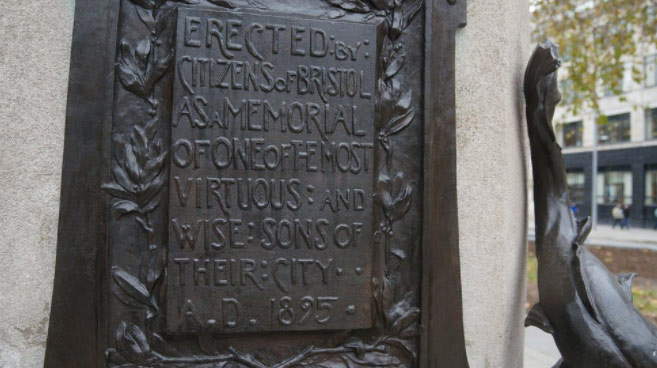

It should not be thought, then, that a removal of history along with the name is taking place, indeed, and not only because the merchant’s grave (he died in 1721, 174 years before the statue was erected in the square) is in its place in All Saints’ Church where it was placed then. The city has embarked on a musealization and enhancement not only of what happened, but also of what made it possible: as of June 7, 2021, the statue, fished out a few days after it was felled in the river into which it had been thrown, monitored and restored, is on display at the civic museum, M Shed, but in a bold choice that does not hide what happened. The statue is shown to the public lying down, bearing the marks of the events of June 7, 2020. Accompanying it is a documentary exhibition titled “What’s Next” (“What’s Next”) that tells the story of the merchant and the statue from the 17th century to the present, and gathers voices and opinions on what it represented and represents for the city. It is also a way to stimulate thinking about the future, as the title makes clear: the “We Are Bristol History” committee is in fact trying to gather as many opinions as possible about what the future of the renamed “Colston Plinth,” the plinth on which the merchant’s statue once loomed, and which for a year now has been the target of proposals, debates and performance art (most famously erected on the plinth a statue of a Black Lives Matter activist, which was removed after 24 hours).
It is not an easy situation, either for the engineers or for a city administration, which perforce cannot endorse what is for all intents and purposes a crime: the Colston statue was not only a public asset, with 120 years of history, but for Historic England it was a cultural asset of absolute significance (grade II out of a maximum of three). Marvin Rees, the mayor who was in charge of this historic challenge, and who is also the first black mayor elected in Europe, to the BBC in June 2021 explained it this way: “there is something terrible about having a statue of a slave trader in the center of your city, and at the same time there are people who feel they are losing a piece of themselves with thetearing down that statue, both things are equally true,” and then, with an oxymoron capable of summarizing the complexity of the situation, he added, when specifically asked, that “as a public official and mayor I cannot ignore the criminal action [...] but, by the grand design of history, that the statue is gone is the right thing.”
The feeling is that the city, or rather the majority part of the city, shared that view, as if relieved that, although not in the way most had hoped, that statue (and the various titling) eventually went away: in short, they would have preferred it to end up in a museum, but now, after those events, it has become city history and for that reason cannot be forgotten. Testifying to this are surveys conducted locally, which indicate that only 20 percent of people believe the statue should have remained there, while 19 percent condemn the ways even though they believe the statue should have been relocated. Activists who were fined for damage to the statue paid it off without difficulty with funds raised by the community.
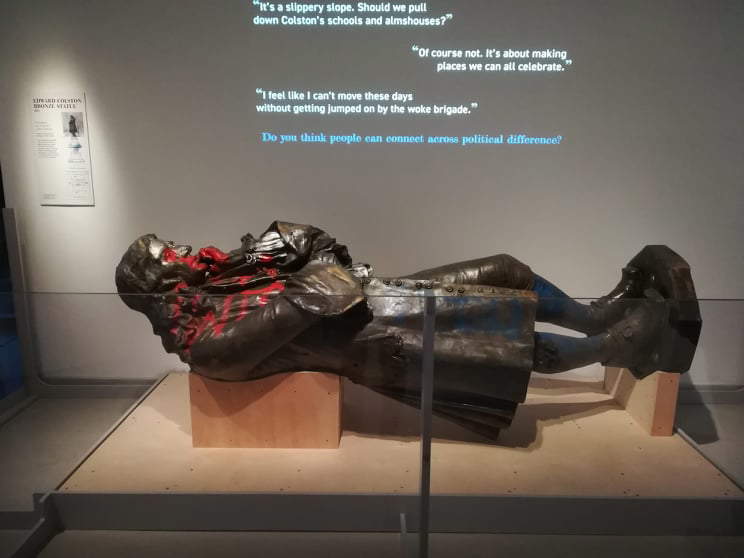


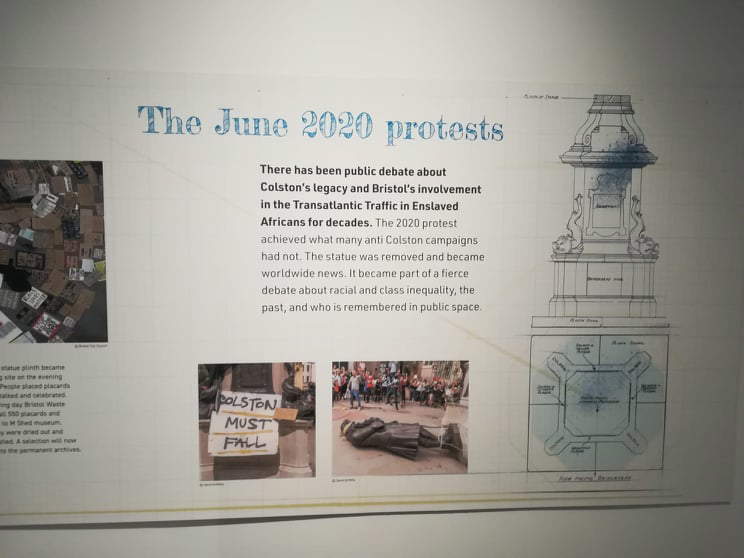
In this contradictory, tense but at the same time collectively enthusiastic atmosphere, the trial of Rhian Graham, 30, Milo Ponsford, 26, Sage Willoughby, 22, and Jake Skuse, 33, as defendants began on December 13. They were identified from the videos as those who threw the ropes around the statue (in the case of the first three) and rolled it toward the river in the fourth case. The context suggested a unique and anomalous trial, and this was confirmed immediately: when the video of the crime with which the four were charged was played in the courtroom, applause broke out at the moment the statue fell. In short, it took the form of a trial of the history of the city of Bristol, and of how it could have allowed that statue not to be removed for all these decades: at the end of the first day, the prosecuting attorney had to remind the courtroom that the trial “is not about Edward Colston, who, while a divisive figure,” but about the statue’s removal in June 2020. This was not the case: the petitions ignored by the city administration, the process that led to the erection of the statue, the discomfort felt by a by no means marginal part of the citizenry were listed. The defendants, while denying wrongdoing, saying they did not act alone but through collective action, repeatedly said they believed it was “right” that the statue be removed (at the time of writing, Jake Skuse’s defense has not yet taken place). Graham called the existence of the statue an “aberrant offense to the people of Bristol.” Ponsford said it was “a piece that the statue should have fallen.” Willoughby called it a “hate crime” in a city chock-full of descendants of enslaved people to leave such a statue standing, explaining that in a situation of conflict, which in this case is a conflict caused by social injustice and discrimination, something needed to be done. Graham reiterated that "after 100 years of dissent, someone should have listened," and explaining the reasons for his action, which he described as occurring in an atmosphere of collective sharing, he explained that if official channels had not worked for a hundred years, it was hard to imagine that they would work now, given the great weight that the Society of Merchants Venturers continues to have in the city.
The defense called to testify not those who could deny the facts and charges (the three had brought a rope with them) but descendants of slaves residing in Bristol, citizens who would tell what the statue represented to them, and a university professor, historian and popularizer David Olusoga, foremost expert on the slave trade. Before the court, Olusoga not only recounted the conditions and numbers of slaves involved in the 17th- and 18th-century trade, but also the statue’s ties to it: the Society of Merchant Venturers, which financed the statue in 1895, had received in 1834 like other slave owners million-dollar compensation for the abolition of slavery-a repayment that the Crown ended paying in 2015. “Caribbean migrants who arrived massively in the United Kingdom to work between the 1940s and 1970s,” the professor noted, “with their taxes helped end paying repayments to the descendants of those who had enslaved their ancestors.”
Following a similar process, one wonders what would happen if every relevant statue found in our cities were placed under a similar magnifying glass, and what would have happened if this had happened publicly in Bristol before June 7, 2020. Judgment in the trial is expected in the next few hours, but could slip to January.
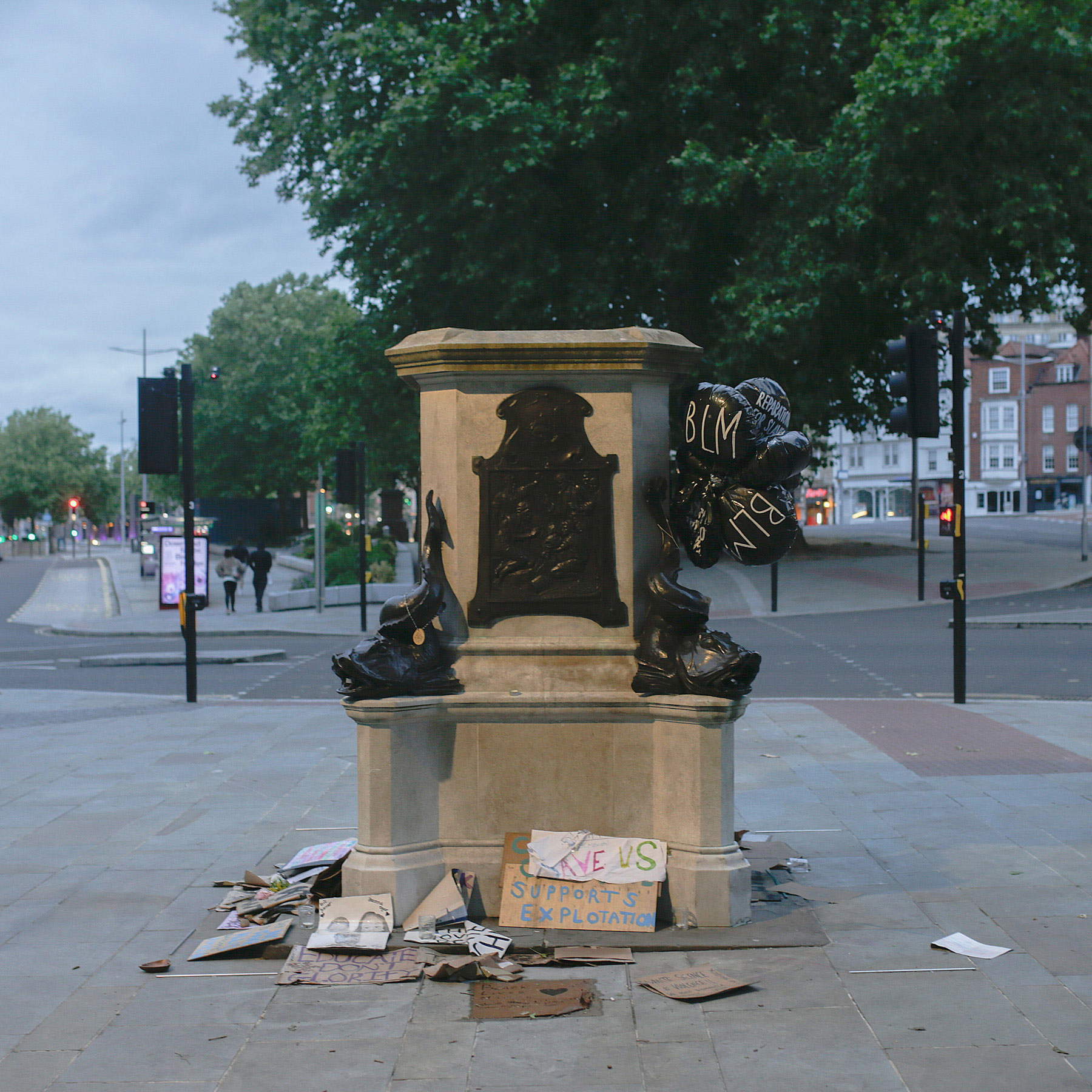
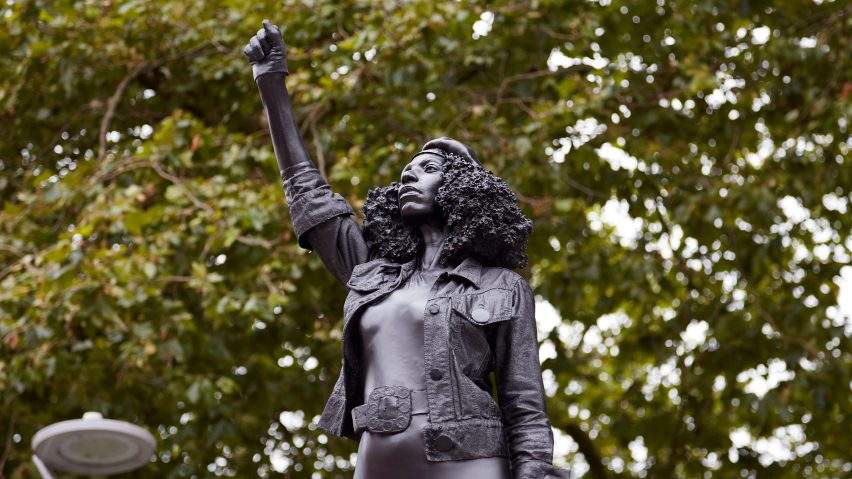
This does not mean that everything has gone or can go well. If a quarter of residents believe that the statue should return to its place, this can only fuel latent conflict. Although the more than peculiar city conditions explain what happened, from a judicial standpoint the process, however it goes, will set the standard, with reverberations outside the city as well. The risk is to create emulation in the case of a very low sentence or, conversely, to radicalize tempers in the case of a high sentence (as previous practice would predict). Proposals on Colston’s “replacement” in that square for now are latent; the committee decided not to talk about it until next spring, after holding a series of public meetings. And in any case, any kind of replacement will only be divisive. There has been no shortage of vandalism against the city’s heritage (understood as actions conducted without claim with the intent to desecrate).
The British government, in the wake of the Bristol events, has embarked on a path of further criminalization of damage to material heritage, and has complicated the legal avenues for removing or relocating statues. With so many other statues under discussion around the Kingdom (the most famous of which is Cecil Rhodes’ statue in Oxford) the way out is far from being mapped out. In this sense, the ruling in the “Colston 4” trial may help find a way, or it may reignite a dormant but certainly unfinished debate. Erecting a statue has never been a democratic process, and managing its replacement is unlikely to be all the way. “A lot of people were really convinced that Edward Colston had been the most virtuous son of the city of Bristol, so you can’t criticize them for being offended that the statue was removed. Because that was what it [the epigraph] said, that’s what he was taught,” poet and activist Lawrance Hoo tells the Bristol Post on the first anniversary of the fall. Professor Tim Cole, at the installation of the city commission on Sept. 25, 2020, explained that the removal was “only a starting point, but not the main focus” of their work. The event, he added, “suggests that it is time for the city to look back, take a long period of reflection and come to terms with its history.” Easy said, much less done. Their work, they declared, would take years. And there is still no idea what conclusions they will, or will not, come to.
The city of Bristol, in addition to frightening Europe, has shown what not to do: debate a monument for 30 years without producing anything concrete. We will see if it can also show what to do, that is, if it can create an example of how to handle well a social conflict that also fully invests the history of the city, its monuments and its urban fabric. For now, he is at least trying.
Warning: the translation into English of the original Italian article was created using automatic tools. We undertake to review all articles, but we do not guarantee the total absence of inaccuracies in the translation due to the program. You can find the original by clicking on the ITA button. If you find any mistake,please contact us.